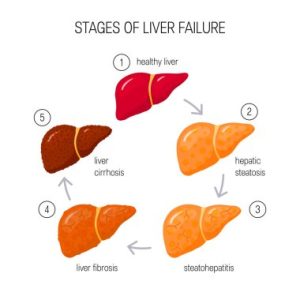
Best Exercise For Healthy Liver (3 Helpful Exercises)
Discover the best exercise for healthy liver and unlock the key to vitality and longevity. In the intricate choreography of bodily health, the liver wields a scepter of paramount importance, orchestrating a symphony of detoxification, metabolism, and vitality within us. Imagine it as the steadfast guardian of our internal realm, tirelessly filtering toxins and fortifying our well-being.
Amidst the cacophony of wellness advice, one exercise stands as a beacon of hope for this noble organ: a regimen as potent as it is invigorating, it dances into the spotlight as the virtuoso of liver health. Prepare to embark on a journey where each movement is not merely a step towards fitness, but a celebration of your liver’s resilience and vitality. Let’s uncover the rhythm of life, the melody of health, through the best exercise for a thriving liver.

Best Exercise For Healthy Liver
Regular cardiovascular exercise, such as brisk walking, jogging, or cycling, is widely regarded as the best exercise for maintaining a healthy liver. These activities help improve blood flow, which aids in the detoxification process and enhances liver function. Incorporating strength training exercises, like weightlifting or resistance band workouts, can also support liver health by promoting muscle mass and overall metabolic function.
Cardiovascular Workouts: Enhancing Liver Function with Every Step
Engaging in cardiovascular exercises, like brisk walking, running, or cycling, stimulates blood circulation throughout the body, including the liver. This increased blood flow helps the liver efficiently remove toxins and waste products, promoting its overall health and function. Aim for at least 30 minutes of moderate-intensity cardio most days of the week to reap these benefits.
Strength Training: Building a Stronger Liver and Body
Incorporating strength training exercises into your fitness routine can also contribute to a healthy liver. Activities such as weightlifting, bodyweight exercises, or resistance band workouts help build muscle mass and improve metabolic function, which supports overall liver health. Aim to include strength training sessions two to three times per week, targeting major muscle groups for optimal results.
Flexibility and Balance: Supporting Liver Health Holistically
While cardiovascular and strength training exercises take center stage in liver health, don’t overlook the importance of flexibility and balance workouts. Practices like yoga, Pilates, or tai chi not only improve flexibility and balance but also reduce stress levels, which can benefit liver function indirectly. Incorporate these activities into your routine to promote holistic well-being and support your liver’s health.
Understanding the Liver
Functions of the liver
The liver, often regarded as the body’s metabolic powerhouse, fulfills a multitude of crucial functions essential for sustaining life. Primarily, it serves as the epicenter of metabolism, orchestrating the intricate biochemical processes that break down nutrients, regulate energy production, and synthesize vital molecules like proteins and cholesterol.
Furthermore, the liver operates as a vigilant detoxification hub, filtering toxins, drugs, and metabolic waste from the bloodstream, rendering them harmless or facilitating their elimination. Additionally, this remarkable organ acts as a strategic storage depot, stashing away essential nutrients such as glycogen, vitamins, and minerals, ensuring a steady supply for the body’s needs during periods of fasting or increased demand. In essence, the liver’s multifaceted roles are indispensable for maintaining metabolic harmony and safeguarding overall health.
Common liver conditions
Non-alcoholic fatty liver disease (NAFLD)
Non-alcoholic fatty liver disease (NAFLD) is a condition characterized by excessive fat accumulation in the liver of individuals who consume little to no alcohol. It encompasses a spectrum of liver disorders ranging from simple fatty liver (steatosis) to more severe conditions like non-alcoholic steatohepatitis (NASH), which can progress to liver fibrosis, cirrhosis, and even liver failure.
NAFLD is often associated with obesity, insulin resistance, type 2 diabetes, high cholesterol, and metabolic syndrome. While the exact cause of NAFLD is not fully understood, it is believed to result from a combination of genetic predisposition, dietary factors, sedentary lifestyle, and metabolic abnormalities. Early detection and lifestyle modifications, including a balanced diet, regular exercise, and weight management, are crucial for preventing the progression of NAFLD and reducing the risk of complications.
Hepatitis
Hepatitis, a term encompassing a spectrum of liver inflammations, is a global health concern due to its various forms, including A, B, C, D, and E. Hepatitis A and E typically spread through contaminated food or water, while B, C, and D are primarily transmitted through blood or bodily fluids. Each strain varies in severity and chronicity, with Hepatitis B and C posing significant risks of long-term liver damage, including cirrhosis and liver cancer.
Vaccination has proven effective in preventing Hepatitis A and B, while advancements in treatment, particularly for Hepatitis C, have improved outcomes. Nonetheless, Hepatitis remains a public health challenge, necessitating ongoing efforts in prevention, screening, and treatment to mitigate its impact globally.
Cirrhosis
Cirrhosis is a chronic liver disease characterized by the gradual replacement of healthy liver tissue with scar tissue, leading to impaired liver function. This condition often develops over many years in response to various factors such as chronic alcohol abuse, viral hepatitis infections, or fatty liver disease. As the liver becomes increasingly scarred, its ability to perform vital functions such as detoxification, protein synthesis, and bile production diminishes, resulting in a range of symptoms including fatigue, jaundice, fluid retention, and easy bruising.
Left untreated, cirrhosis can progress to liver failure, necessitating liver transplantation as the only viable treatment option in severe cases. Early diagnosis and intervention, including lifestyle changes and medication, can help slow the progression of cirrhosis and improve quality of life for affected individuals.
Jaundice
Jaundice, a condition characterized by yellowing of the skin and whites of the eyes, occurs when there is an excess of bilirubin in the bloodstream. Bilirubin, a yellow pigment, is typically processed by the liver and eliminated through urine. However, when the liver is unable to metabolize bilirubin efficiently or there is an obstruction in the bile ducts, bilirubin levels rise, leading to jaundice. This condition can be a symptom of various underlying health issues, such as liver disease, hepatitis, or gallstones. Depending on the cause, jaundice may resolve on its own or require medical intervention.

Exercise and Liver Health
Mechanisms through which exercise benefits the liver
Improving insulin sensitivity
Regular physical activity enhances the body’s ability to utilize insulin efficiently, which in turn helps regulate blood sugar levels. When insulin sensitivity improves, it reduces the risk of insulin resistance, a condition often linked to liver diseases like non-alcoholic fatty liver disease (NAFLD). By lowering insulin resistance, exercise can mitigate excessive glucose production in the liver, thereby decreasing the accumulation of fat and reducing the risk of liver damage.
Additionally, exercise promotes the release of certain hormones and cytokines that have anti-inflammatory effects, which can further protect the liver from inflammation and injury. Overall, incorporating exercise into one’s routine plays a crucial role in maintaining liver health and preventing various liver-related complications.
Reducing inflammation
Exercise benefits the liver through various mechanisms, with one key pathway being the reduction of inflammation. Regular physical activity helps mitigate chronic low-grade inflammation, a common feature of liver diseases such as non-alcoholic fatty liver disease (NAFLD) and non-alcoholic steatohepatitis (NASH). By engaging in exercise, the body triggers anti-inflammatory responses that can counteract the inflammatory processes within the liver.
This reduction in inflammation not only promotes liver health but also aids in preventing the progression of liver diseases. Additionally, exercise contributes to improved lipid metabolism and overall metabolic health, all of which are crucial for maintaining liver function and preventing the accumulation of fat in the liver. Overall, incorporating regular exercise into one’s lifestyle can significantly benefit liver health by reducing inflammation and supporting metabolic processes.
Enhancing blood flow
Exercise benefits the liver through several mechanisms, one of which is enhancing blood flow. Physical activity increases heart rate and blood circulation, leading to improved delivery of oxygen and nutrients to the liver. This increased blood flow helps in the removal of toxins and waste products from the liver, promoting its detoxification function. Improved blood flow also supports the regeneration of liver cells and promotes overall liver health.
Improved bile flow
Regular exercise offers the enhancement of bile flow. Bile, synthesized by the liver, plays a crucial role in digestion, particularly in the breakdown and absorption of fats. Through consistent physical activity, the body’s circulation improves, facilitating the transportation of bile from the liver to the gallbladder and eventually into the intestines. This enhanced bile flow not only aids in efficient digestion but also helps in the elimination of toxins from the liver, promoting its overall well-being. In cases where jaundice is caused by obstruction of the bile ducts, gentle exercise can help promote bile flow and alleviate symptoms.
Types of exercise beneficial for the liver
Various types of exercise can significantly benefit liver health by promoting circulation, reducing fat accumulation, and enhancing overall metabolic function. Aerobic exercises such as jogging, cycling, or brisk walking elevate heart rate and oxygen consumption, aiding in fat metabolism and improving liver function. Resistance training, including weightlifting or bodyweight exercises, strengthens muscles, boosts metabolism, and helps in controlling weight, which is crucial for liver health.
Additionally, flexibility exercises like yoga or Pilates enhance blood flow to the liver, promote relaxation, and alleviate stress, which can indirectly benefit liver function by reducing inflammation and oxidative stress. Incorporating a combination of these exercises into a balanced fitness routine can play a vital role in maintaining optimal liver health and preventing liver-related conditions.
Recommended frequency, intensity, and duration of exercise
Exercise is a cornerstone of maintaining liver health, with recommended frequency, intensity, and duration playing crucial roles. For individuals seeking to optimize liver function, a moderate intensity exercise routine of at least 150 minutes per week is generally recommended by healthcare professionals. This translates to about 30 minutes of moderate exercise on most days of the week.
However, it’s important to note that intensity and duration should be tailored to individual fitness levels and health conditions. Engaging in activities such as brisk walking, cycling, or swimming not only aids in weight management but also improves insulin sensitivity and reduces the risk of fatty liver disease. Always consult with a healthcare provider to determine the most suitable exercise regimen based on individual health status and goals.
Best Exercises for a Healthy Liver
Aerobic exercises
Aerobic exercises are among the best forms of physical activity to promote a healthy liver. Engaging in activities like brisk walking, jogging, swimming, or cycling can significantly benefit liver health by increasing blood flow throughout the body, including to the liver. This enhanced circulation helps the liver efficiently remove toxins and waste products from the bloodstream.
Additionally, aerobic exercises help to manage weight and reduce the risk of obesity, which is closely linked to fatty liver disease, a common liver condition. Regular aerobic exercise also aids in improving insulin sensitivity and reducing inflammation, further supporting liver function. Incorporating these exercises into your routine can contribute to maintaining a healthy liver and overall well-being.
Resistance training exercises
Resistance training exercises, such as weightlifting or bodyweight exercises, are among the best workouts for promoting a healthy liver. These exercises stimulate muscle growth and improve insulin sensitivity, which are crucial for liver health. By enhancing muscle mass, resistance training helps the body to better regulate blood sugar levels and metabolize fats, reducing the risk of fatty liver disease and other liver-related complications.
Additionally, resistance training boosts overall metabolism, aiding in weight management and reducing excess fat accumulation in the liver. Incorporating resistance training into your fitness routine not only strengthens muscles but also supports optimal liver function, contributing to overall well-being and longevity.

Flexibility exercises
Flexibility exercises may not directly target the liver, they play a crucial role in maintaining overall health, which indirectly supports liver function. Engaging in activities like yoga or Pilates can enhance blood circulation, which promotes detoxification processes in the liver. Improved circulation also helps in delivering essential nutrients and oxygen to liver cells, aiding in their repair and regeneration. Additionally, flexibility exercises reduce stress levels, which is beneficial for liver health as chronic stress can impair its function. Incorporating flexibility exercises into a well-rounded fitness routine can contribute to a healthier liver and overall well-being.
Incorporating Exercise into Daily Routine
Incorporating exercise into daily routines involves setting realistic goals, such as starting with achievable milestones and making gradual progress. Creating a varied exercise routine by mixing up different workouts and engaging in diverse activities is essential for long-term commitment. Finding enjoyable activities, such as fun workouts and pleasurable physical activities, can make exercise more sustainable. Incorporating exercise into daily activities like taking the stairs instead of the elevator, walking or biking for transportation, and integrating active breaks during sedentary periods can seamlessly infuse movement into everyday life.
Lifestyle Factors for Liver Health
Importance of balanced diet
A balanced diet stands out as a cornerstone for liver health, emphasizing the significance of consuming a variety of nutrient-rich foods while limiting processed foods, excessive sugars, and saturated fats. Incorporating ample fruits, vegetables, whole grains, lean proteins, and healthy fats provides essential vitamins, minerals, and antioxidants that support liver function and promote detoxification processes.
Furthermore, staying hydrated aids in flushing toxins from the liver and preventing dehydration, which can impair its function. By adopting a balanced diet, individuals not only nurture their liver but also enhance their overall health and vitality, underscoring the profound impact of dietary choices on well-being.

Limiting alcohol consumption
Maintaining optimal liver health involves a multifaceted approach, with lifestyle choices playing a significant role. Among these, abstaining from alcohol consumption stands out as paramount. Alcohol can inflict serious damage on the liver, leading to conditions such as fatty liver disease, alcoholic hepatitis, and cirrhosis. By avoiding alcohol, individuals can safeguard their liver from inflammation, scarring, and impaired function. Embracing a lifestyle devoid of excessive alcohol intake not only preserves liver health but also promotes overall well-being, fostering a foundation for longevity and vitality.
Avoiding tobacco products
Avoiding tobacco products is essential for liver health. Smoking increases the risk of liver cancer and exacerbates liver disease progression. Quitting smoking reduces inflammation and improves liver function over time. Embracing a smoke-free lifestyle enhances overall well-being and supports liver longevity.
Maintaining a healthy weight
Maintaining a healthy weight is crucial for liver health. Obesity contributes to fatty liver disease and insulin resistance, leading to liver complications. Incorporating regular exercise and portion control into daily routines helps manage weight and reduce liver fat accumulation. Prioritizing a healthy weight fosters optimal liver function and reduces the risk of metabolic disorders.
Getting adequate sleep
Getting adequate sleep is essential for liver health. Sleep deprivation disrupts liver function and increases the risk of liver diseases such as non-alcoholic fatty liver disease (NAFLD). Establishing a consistent sleep schedule and creating a restful sleep environment promote liver repair and regeneration. Prioritizing quality sleep enhances overall health and supports liver resilience.
Monitoring Liver Health
Regular Medical Check-ups
Regular medical check-ups are essential for monitoring liver health. During these appointments, doctors can assess liver function and detect any potential issues early on. Routine screenings help to keep track of liver health and prevent serious complications.
Liver Function Tests
Liver function tests play a crucial role in monitoring the health of the liver. These tests measure various markers in the blood that indicate how well the liver is functioning. Common liver function tests include ALT, AST, and bilirubin levels, providing valuable insight into liver health.
Recognizing Symptoms of Liver Problems
Recognizing symptoms of liver problems is vital for early detection and treatment. Symptoms may include fatigue, yellowing of the skin or eyes (jaundice), abdominal pain, swelling in the abdomen, and dark urine. Being aware of these signs can prompt individuals to seek medical attention promptly. Early intervention can help prevent liver damage and improve overall health outcomes. It’s important not to ignore any symptoms or changes in liver function and to seek prompt medical attention when needed.
Frequently Asked Questions About Best Exercise For Healthy Liver
Q1. What role does exercise play in liver health?
A. Regular exercise can help maintain a healthy weight, reduce the risk of fatty liver disease, improve circulation, and boost overall liver function by aiding in detoxification processes.
Q2. What types of exercises are best for liver health?
A. A combination of aerobic exercises like walking, jogging, or swimming, along with resistance training such as weightlifting or bodyweight exercises, is ideal. These exercises help reduce fat accumulation in the liver and improve its metabolic function.
Q3. How often should I exercise for optimal liver health?
A. The American Heart Association recommends at least 150 minutes of moderate-intensity aerobic exercise or 75 minutes of vigorous-intensity aerobic exercise per week, along with muscle-strengthening activities on two or more days a week for overall health, which also benefits liver health.
Q4. Can yoga or Pilates benefit liver health?
A. Yes, practices like yoga and Pilates can improve circulation, reduce stress, and aid digestion, all of which indirectly benefit liver health. Certain yoga poses, such as twists and inversions, may specifically target liver health by stimulating blood flow to the organ.
Q5. Are there any specific exercises to avoid if you have liver issues?
A. Individuals with advanced liver disease or specific liver conditions should consult with a healthcare professional before starting any exercise regimen. Generally, high-impact exercises that put excessive strain on the body, such as heavy weightlifting or intense endurance training, may not be suitable for those with compromised liver function.
Q6. How does exercise help prevent fatty liver disease?
A. Exercise helps prevent fatty liver disease by reducing body fat, particularly visceral fat around the organs. It also enhances insulin sensitivity and regulates lipid metabolism, which are crucial factors in preventing fat accumulation in the liver.
Q7. Can exercise help manage existing liver conditions?
A. Yes, regular exercise can help manage certain liver conditions like non-alcoholic fatty liver disease (NAFLD) by reducing liver fat, improving insulin sensitivity, and lowering inflammation markers. However, it’s important to consult with a healthcare provider to tailor an exercise plan to individual needs.
Q8. Is there a specific time of day that’s best for exercising for liver health?
A. The best time to exercise is the time that fits into your schedule and allows for consistency. Some people find it beneficial to exercise in the morning to kickstart metabolism and promote energy throughout the day, while others prefer evenings for stress relief. Choose a time that works best for you and stick to it.
Q9. How long does it take to see improvements in liver health with exercise?
A. The timeline for seeing improvements in liver health through exercise varies depending on factors such as the individual’s starting point, the intensity and consistency of exercise, and any underlying health conditions. Generally, significant improvements may be noticeable within a few months of starting a regular exercise routine.
Q10. Can dietary changes enhance the benefits of exercise for liver health?
A. Yes, combining regular exercise with a balanced diet rich in fruits, vegetables, lean proteins, and healthy fats can amplify the benefits for liver health. Avoiding excessive consumption of processed foods, sugary beverages, and alcohol is particularly important for liver health when coupled with exercise.
Conclusion
In conclusion, prioritizing regular exercise emerges as a fundamental pillar in promoting liver health. Through its multifaceted benefits, including weight management, reduced inflammation, improved insulin sensitivity, and enhanced blood circulation, exercise plays a pivotal role in safeguarding the liver from various diseases and disorders.
Whether it’s aerobic activities like brisk walking, cycling, or resistance training exercises such as weightlifting, each form contributes uniquely to overall fitness and liver well-being. Embracing an active lifestyle not only fosters physical vitality but also fosters a resilient liver, thus underscoring the invaluable importance of exercise as a cornerstone in the pursuit of holistic health.